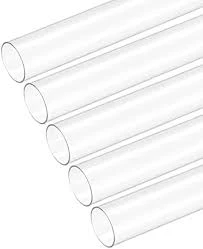កញ្ញា . 15, 2024 00:17 Back to list
plumbing pipes and fittings
Understanding Plumbing Pipes and Fittings
Plumbing systems are essential for the functional infrastructure of any building, providing clean water supply and efficient waste removal
. At the heart of these systems are plumbing pipes and fittings, which play a crucial role in ensuring safe and efficient water flow.Plumbing pipes come in various materials, each with its unique properties and applications. The most common types include PVC, CPVC, copper, and PEX. PVC (polyvinyl chloride) pipes are lightweight, affordable, and resistant to corrosion, making them suitable for drainage and irrigation systems. CPVC (chlorinated polyvinyl chloride) pipes, on the other hand, can withstand higher temperatures, making them ideal for hot water applications.
Copper pipes are known for their durability and longevity. They can handle high-pressure systems and are resistant to decay, but they can be more expensive than other materials. PEX (cross-linked polyethylene) pipes are flexible and easy to install, which makes them a popular choice for residential plumbing. They are also resistant to scale and chlorine, ensuring a longer lifespan.
plumbing pipes and fittings

Fittings, the crucial connectors that join pipes together, come in various shapes and sizes to accommodate different plumbing needs. Common types of fittings include elbows, tees, couplings, and caps. Elbows allow for changes in pipe direction, while tees enable branching of the piping system. Couplings are used to connect two pipes of the same diameter, while caps are used to seal the ends of pipes.
Choosing the right pipes and fittings is essential for ensuring that a plumbing system operates effectively. Factors such as the type of water being transported (hot or cold), pressure requirements, and environmental conditions will influence the choice of materials. Additionally, local building codes and regulations must be taken into account to ensure compliance and safety.
Proper installation of plumbing pipes and fittings is equally important. Inadequate installation can lead to leaks, water damage, and costly repairs. It’s recommended to hire a licensed plumber for installations to ensure that everything is done according to standards.
In conclusion, understanding plumbing pipes and fittings is key to maintaining a functional plumbing system. By selecting the appropriate materials and ensuring proper installation, homeowners can enjoy reliable water supply and waste management for years to come. Whether it’s for new construction or renovations, investing in quality plumbing components is always a wise decision.
-
Durable PP Rigid Sheet: Lightweight, Chemical Resistant Solutions
NewsAug.21,2025
-
PVC Grey Sheet for Extraction: Chemical Resistant & Durable
NewsAug.19,2025
-
Durable PVC Pipe Fittings for Plumbing & Irrigation Needs
NewsAug.18,2025
-
HDPE Steel Belt Reinforced Spiral Corrugated Pipe | High Strength
NewsAug.17,2025
-
HDPE Pipe Fittings: Durable, Leak-Proof Solutions
NewsAug.16,2025
-
Premium CPVC Sheet: High-Temp & Chemical Resistant Solutions
NewsAug.15,2025

